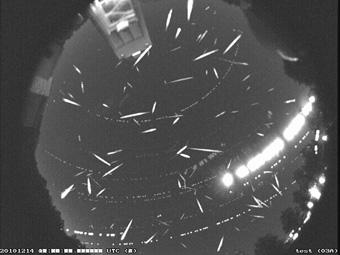
Section Branding
Header Content
Geminid Meteor Shower This Week
Primary Content

The Geminid meteor shower has given a remarkable annual display around mid-December every year since it was first noticed in 1830. While the meteor shower will be visible from December 10-16, the peak show will be overnight between December 13 and December 14. At its peak, the Germinid meteor shower has regularly produced around 80-120 per hour.
During the peak hours on December 13 at 11 p.m. until December 14 at 3 a.m., you’ll be able to live chat with meteor experts from NASA's Marshall Space Flight Center.
To give you an idea of the show you can expect, check out this video:
Tips from NASA for viewing meteor showers:
1.Dress appropriately. If you’re going to be away from home, check the weather and plan ahead to dress warmly for the cool/ cold night out.
2.Plan for seating. The show lasts a while, so plan to bring a blanket or chairs.
3.Do NOT bring a telescope. The meteors are bright enough to be seen with the naked eye. They also span the sky and a telescope would actually limit your view of the shower.
Check out NASA’s Geminid meteor shower information page for more history and facts on the Geminids. You’ll also be able to watch a live stream feed of the shower in the event that weather in your area doesn’t cooperate or you live in a too-bright area for viewing.
Teachers interested in space and specifically the Mars Curiosity rover should check out the live virtual field trip being held on December 12 at 1pm.
The Geminid meteor sho





